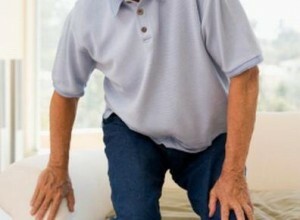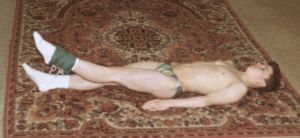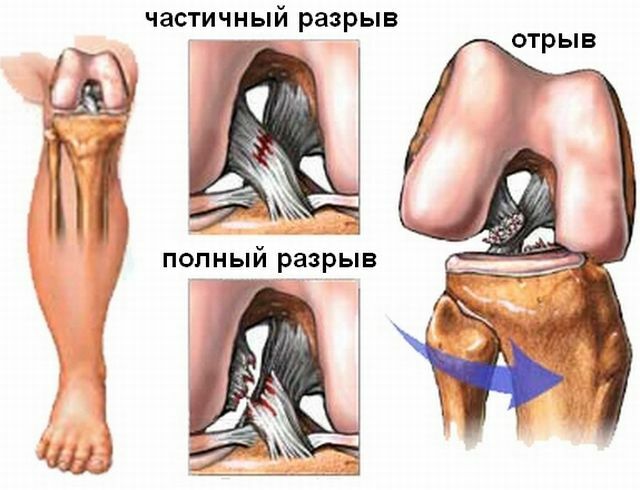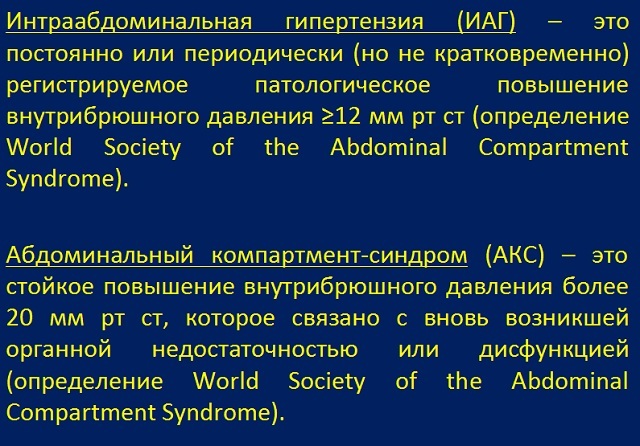 Hip joint contraction - restriction of mobility in the femoral joint .
Hip joint contraction - restriction of mobility in the femoral joint .
In the mechanism of development of contracture the main cause is cicatrical contraction of tendons, articular capsules. Skin tightening is possible because of the formation of burn scars.
The contraction of the subcutaneous tissue occurs due to the long inflammatory purulent processes that have arisen in it. With the long wearing of gypsum, there may be muscle atrophy and myogenic contracture.
In the case of nerve damage, a neurogenic disorder may occur. With chronic inflammation, it progresses gradually.
Article Contents
- reasons
- process Classification
- Symptoms and diagnosis
- Features
- disease in newborns Treatment contracture
- Consequences and complications
- Preventive measures Conclusions
reasons
process reasons why there is a contracture of the hip joints( TZB):
- reduction in the length of the joint muscles;
- loss of elasticity of ligaments;
- presence of deformation of the joint bones due to arthritis or arthrosis;
- damage and inflammation that cause destruction.
 What is typical and most often caused by contracture of the knee joint? About the methods of treatment read in our material.
What is typical and most often caused by contracture of the knee joint? About the methods of treatment read in our material.For the treatment of sea salt of joints it was safe and effective, we advise you to study our prescriptions and instructions for such treatment.
Classification
Types of violation:
- congenital - appears as a result of hereditary defects;
- purchased - occurs under the influence of an unfavorable external environment.
In the presence of any of the forms of damage, contracture can cause complete immobility.
Depending on the position in which the leg stays as a result of the restriction of movement, the flexure, extensor, leading, leading and retracting contractures of the TZB are identified.
In general, the most common are combinatorial contractures.
Symptomatology and diagnosis

Hip extension test
The onset of the development of the lesion passes unnoticed for the patient, becausedoes not manifest itself in any way. And with the existing contracture there are pains in the area of the affected joint, sensation of some obstacles during movement.
Constant and indicative sign of joint deviation is a decrease in muscle volume. Also, at later stages of this lesion, deformity of the damaged joint may occur.
The limitation of mobility of the hip joint in infants is manifested by the shortening of the diseased leg.
The diagnosis is based on measuring the volume of movements.
The X-ray of the corresponding part is definitely appointed.
Otherwise, additional research depends on the nature of the disorder that caused the restriction of movements. With passive contractures, the patient is referred to an MRI or CT scan.
When neurogenic - a consultation of a neurologist is necessary, it is possible to perform electromyography and other tests. If suspected of inflammation, visit a surgeon, rheumatologist, etc.
Features of pathology in newborns
This deviation is characterized by a violation of the formation of parts of the joint, as well as underdevelopment of its individual parts. Congenital disorders of the formation of the hip joint unites a wide range of conditions: from dysplasia to hip dislocation.
In children with a hip dislocation, even with treatment over the years, the risk of coxarthrosis, contractures, aseptic necrosis and other disorders, which require surgery, is significantly increased.
The appearance of congenital lesions is associated with the immaturity of the connective tissue of the joint and the disproportion of its maturation, the peculiarities of childbirth and the postpartum period, as well as the sex of the child.
The main task of the doctor - as early as possible to identify the violation and begin treatment. It must begin with the first days of life.
The earlier treatment is initiated, aimed at the development of hip joints, the less it will last. It should not be ignored that an untreated pre-invasion can become a subluxation and a dislocation, whose treatment without surgery is impossible.
 If the resulting contracture is detected during examination, and ultrasound confirms subluxation and dislocation, it is recommended to begin treatment using Pavlik's stirrups.
If the resulting contracture is detected during examination, and ultrasound confirms subluxation and dislocation, it is recommended to begin treatment using Pavlik's stirrups.
Such children may have arthrosis, pain in the operated joint, girls in the future will have problems during childbirth.
Any load can cause problems in the joint, limp, contracture, reduction or restriction of movements in the hip joint.
In any case, the kid is disabled since childhood, the risk of complications will affect his entire subsequent life.
Treatment of contracture
The main goal of physicians is to neutralize puffiness, inflammation, normalize the mobility of the joint. Successful treatment is possible with timely access to a doctor.
This violation requires conservative and surgical treatment. During conservative treatment, the following are performed:
- drug blockade;
- manual therapy;
- Drug treatment with hormones and analgesics;
- physiotherapy;
- therapeutic massage;
- gymnastics.
The main stages of development:
- In the first days of self-rehabilitation, it is allowed to wiggle in the patient joints within acceptable limits with a small force, gradually increasing the amplitude of the oscillations.
- An intensive development of contractures should be started one month after the start of self-rehabilitation.
- Wounds and trophic ulcers on the limbs are not the reason for abandoning the development.
- Development in the limbs occurs from large joints to small joints.
- In femoral joints work out all possible freedom of movement, eventually achieving maximum amplitude.
In chronic patients, activation of the process can cause ligament rupture and even fracture of bones.
Excessive rotational movements in the hip joints can lead to hip fractures in people with osteoporosis.
Exercises for the hip joint:
- Lie down on the back of the , grasping the cord attached to the back of the bed. Passage to semi-sitting and sitting position. Slowly( 6 times).

- On the back of the .Movement in a circle with a straight leg. Slowly( 8 times).
- On the back, holding hands behind the bed: lifting straight legs one at a time;slowly( 8 times);circular motion of the right and left foot. Slowly( 5 times).
- On the side, damaged leg from above. Retracting the leg. Slowly( 8 times).
- Standing sideways to the bed with the support of her hand: lifting the legs forward and withdrawing back. Slowly( 10 times).
- Standing, socks together. Tilt forward, try to reach the floor with your fingers or palms. With an average speed( 16 times).
Consequences and complications of
Without timely correct treatment, such joint damage leads to its immobility. The disease of this stage is eliminated only by surgery.
If failure is not treated, it can cause stiffness and even ankylosis. Often, adjacent joints are involved in the process.
Contracture has very serious consequences for diseases and joint damage.
After all, in these cases, there is often a lesion of soft tissues around the affected joint. At the same time, if the contracture originated in childhood, then the foot can lag behind in growth.
Preventative measures
It is easier to prevent joint contracture than to treat it later. The main preventive measures include:
- the correct position of the leg and joint during immobilization;
- competent treatment of any joint damage;
- application of tires and orthoses if necessary;
- joint development after a leg injury.
Conclusions
The prognosis in treatment depends on the nature of the pathology and its type, the time from the moment of appearance, the age and condition of the person, the usefulness of the treatment.
Early onset of treatment helps to achieve significant results.
Complex treatment with the use of medical achievements with the patient's commitment can produce positive results.



